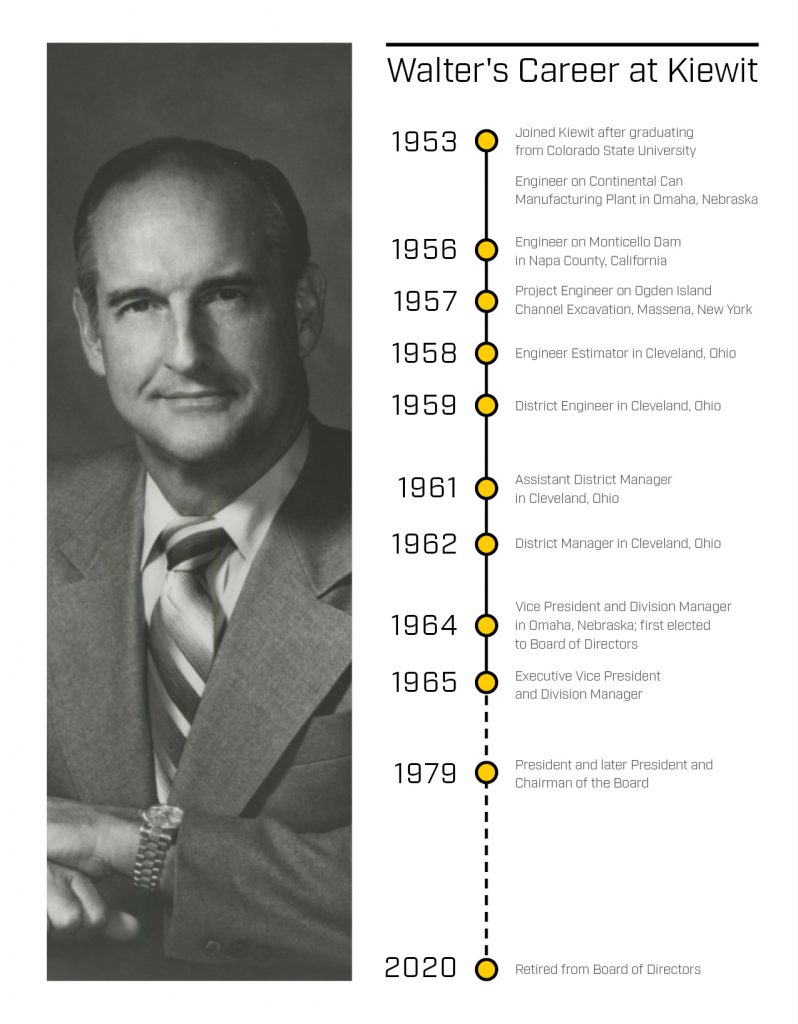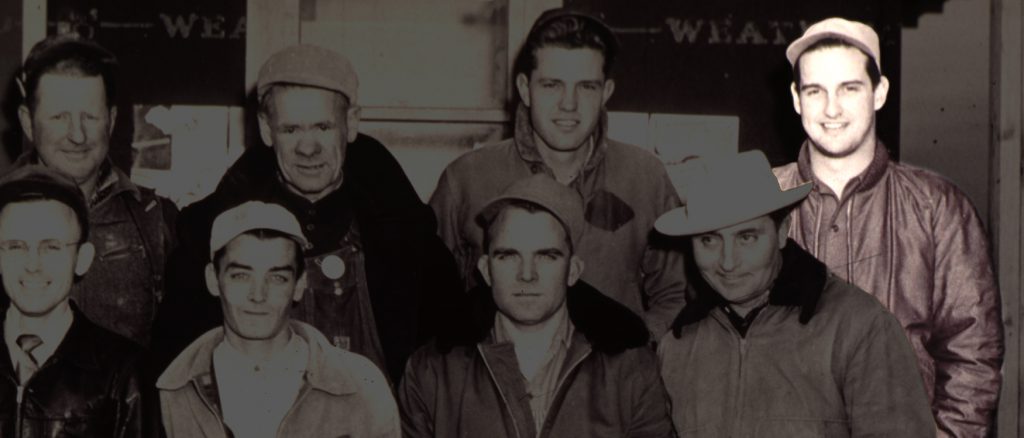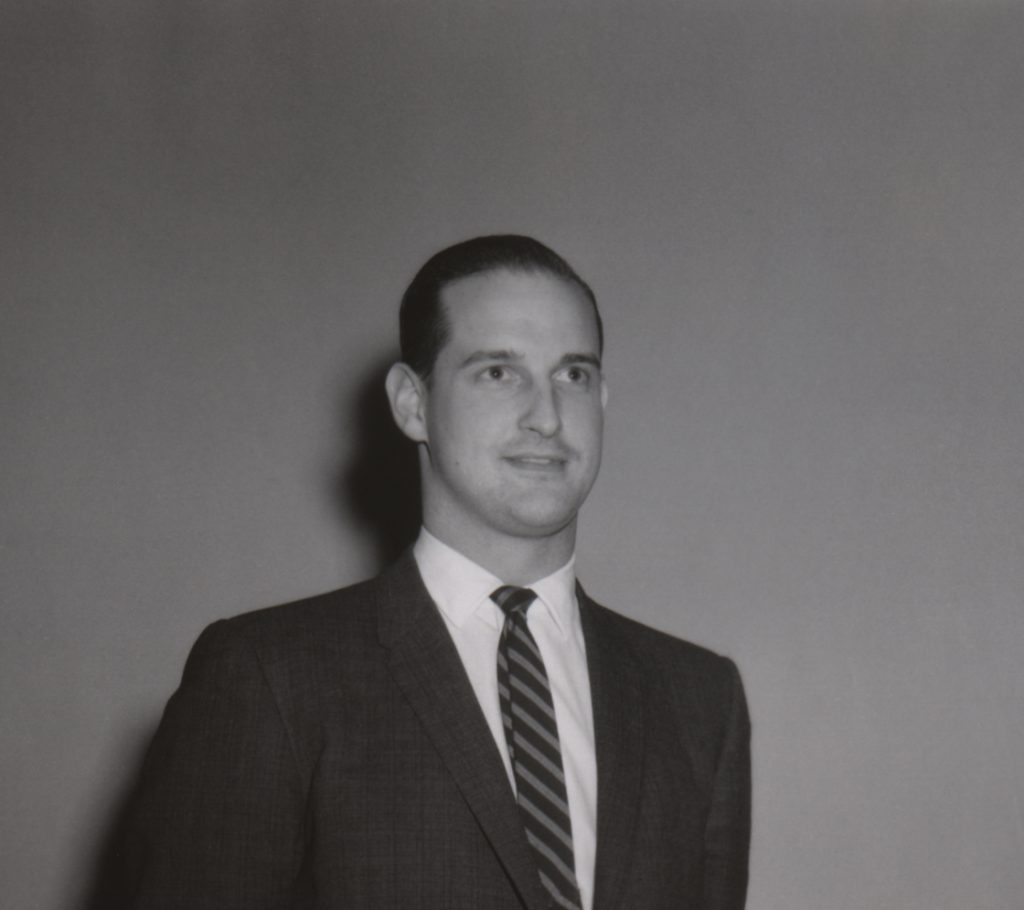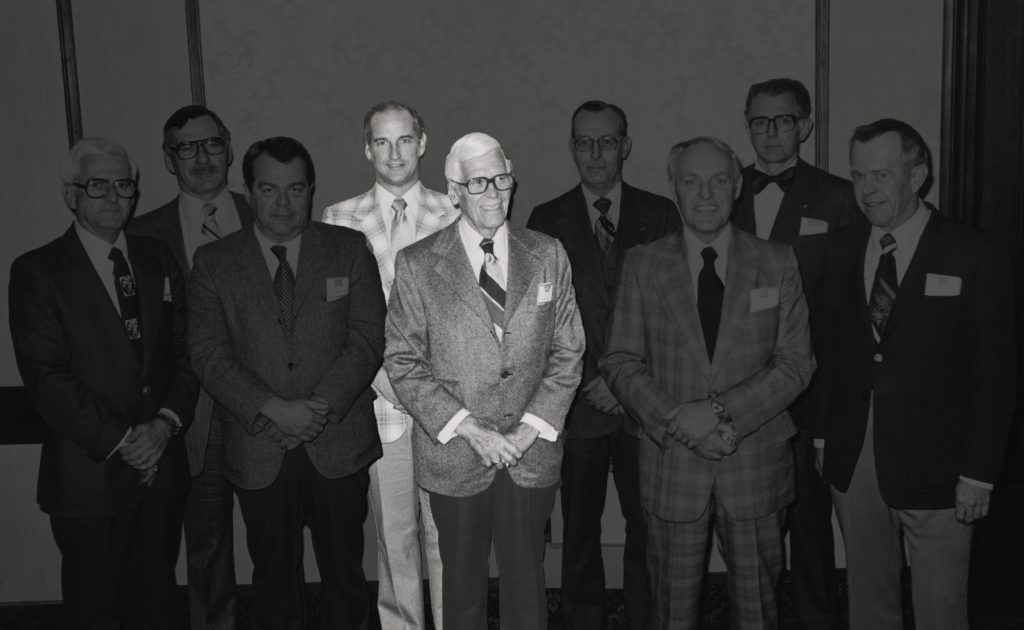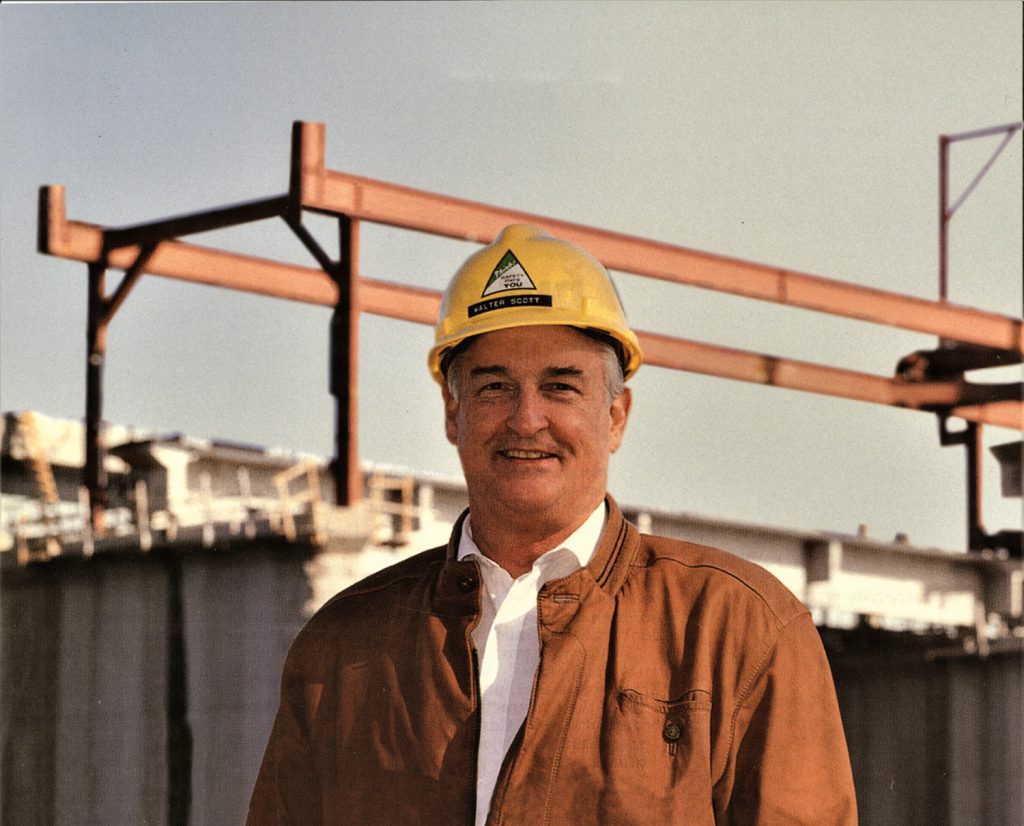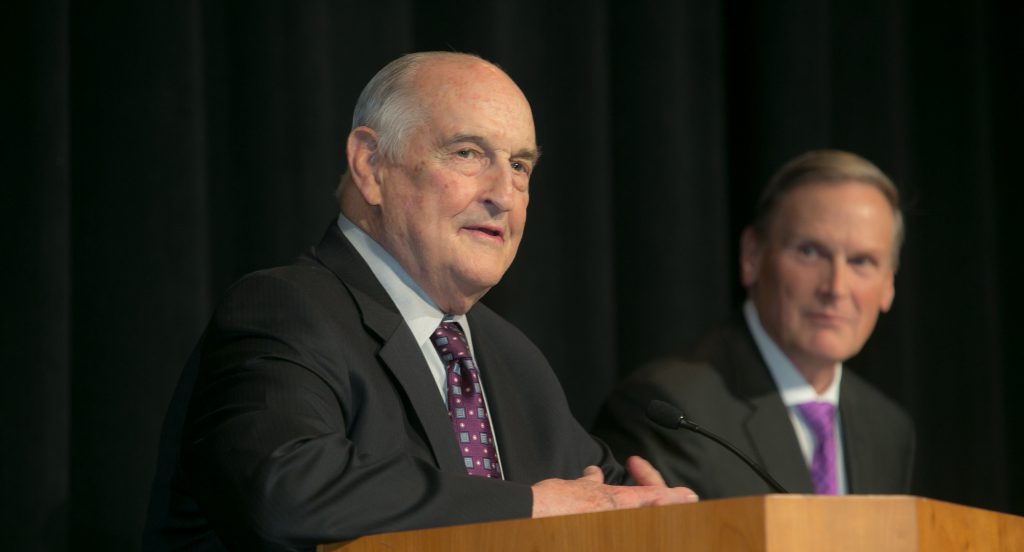In the early sixties, Vice President and Division Manager Lee Rowe traveled to Cleveland to determine who might be the best candidate to succeed a District Manager who was making plans to retire.
He returned to Omaha to advise Peter Kiewit that the best option was not any of the district’s more experienced employees. It was a relatively young man who, in addition to having a solid understanding of the fundamentals of contracting, understood the business side of construction.
That young man was 30-year-old Walter Scott, Jr. Peter was skeptical, but told Lee to proceed if he was confident in his decision. Under Walter’s leadership the district’s profitability improved dramatically.
Several years later, Walter was asked to return to his hometown of Omaha to serve as a Vice President and Division Manager. With a focus on work east of the Mississippi, he also sought to establish a Kiewit presence in the eastern provinces of Canada. Together with John Bahen he pursued work in Ontario and Quebec, planting the seeds for a dramatic expansion of the company’s work throughout Canada.
Peter soon saw what Lee had meant by Walter’s understanding of the business side of contracting. In 1965, he chose Walter to be Executive Vice President, with added responsibilities for oversight of the company’s finance and administrative functions.
In November 1979, Peter Kiewit called from his room at Clarkson Hospital. He said he felt his time was short and wished Walter the best of luck. He never made it out of the ICU following surgery and Walter would lead the company with distinction for the next 19 years.
It was a career that almost didn’t happen. During high school summers, Walter worked at a ranch near John Day, Oregon owned by a friend of his father. Upon graduation, he chose to attend Colorado A&M (now Colorado State University) because he planned to major in Range Management.
Early in his studies, fellow Nebraskan and friend Gene Miller asked Walter what he planned to study. Gene dissuaded him from his original plans, making the case that civil engineering might be a more challenging curriculum but one that would lead to a more diverse set of career opportunities.
Gene was older than Walter but lived to see the 2017 dedication of the Walter Scott, Jr. College of Engineering at their alma mater. His career advice had been sound, but Walter did go on to purchase a ranch near Elk Mountain in south central Wyoming. Some dreams never fade.
Walter Scott, Jr., (back row, far right) was an engineer on the Continental Can Co. Plant project in Omaha, Nebraska, in 1953.
Walter’s predecessor as president, Bob Wilson, passed about seven months after Peter’s death. Walter was Chairman and CEO of one of North America’s largest contractors at age 49, and two of his mentors were gone. An added burden was a cancer diagnosis for Carolyn, who he had married before his senior year at CSU. She passed away in 1983. Their family was comprised of three daughters and one son, all born in different cities due to their many moves early in Walter’s career.
Walter found a new partner in Suzanne Marshall Singer, who had been the first Executive Director of the Omaha Zoo Foundation. They married in 1987. Sue’s two sons are both physicians, leading to a greater appreciation by Walter for philanthropy in medical research. Sue passed away in 2013.
Among his many community leadership roles, Walter’s greatest love was reserved for Omaha’s Henry Doorly Zoo & Aquarium. He became chairman of the Omaha Zoological Society in 1982. Over the next several decades he helped turn an average zoo into what is universally recognized as one of the finest in the world. At the time of his passing, he was still serving as chairman of the Omaha Zoo Foundation.
He was also passionate about helping young people get a start in the world. Each year, more than 100 students at his alma mater and several other universities receive Scott Scholarships.
When his children were young, Walter would often tell them that the most important thing they could have was their good health. The most important thing they could acquire was a good education. And the most important thing they could be was a giver. Because the world already has plenty of takers.
Walter followed his own advice. It has been estimated that he contributed $500 million to charitable causes during his lifetime. Following the example of his mentor Peter Kiewit, most of his estate will go into his charitable foundation.
Longtime friend Warren Buffett once observed that Walter didn’t see things as they are, but as they could be five years or ten years into the future. But it was his professional background as an engineer and builder that made him a practical dreamer.
It was a life well-lived. Walter Scott, Jr. leaves behind a special legacy to the Kiewit people of today, the charitable causes that benefited from his generosity, and the children, grandchildren and great-grandchildren who were fortunate to have had such a wonderful role model.
For more information on Walter’s giving, click here.
